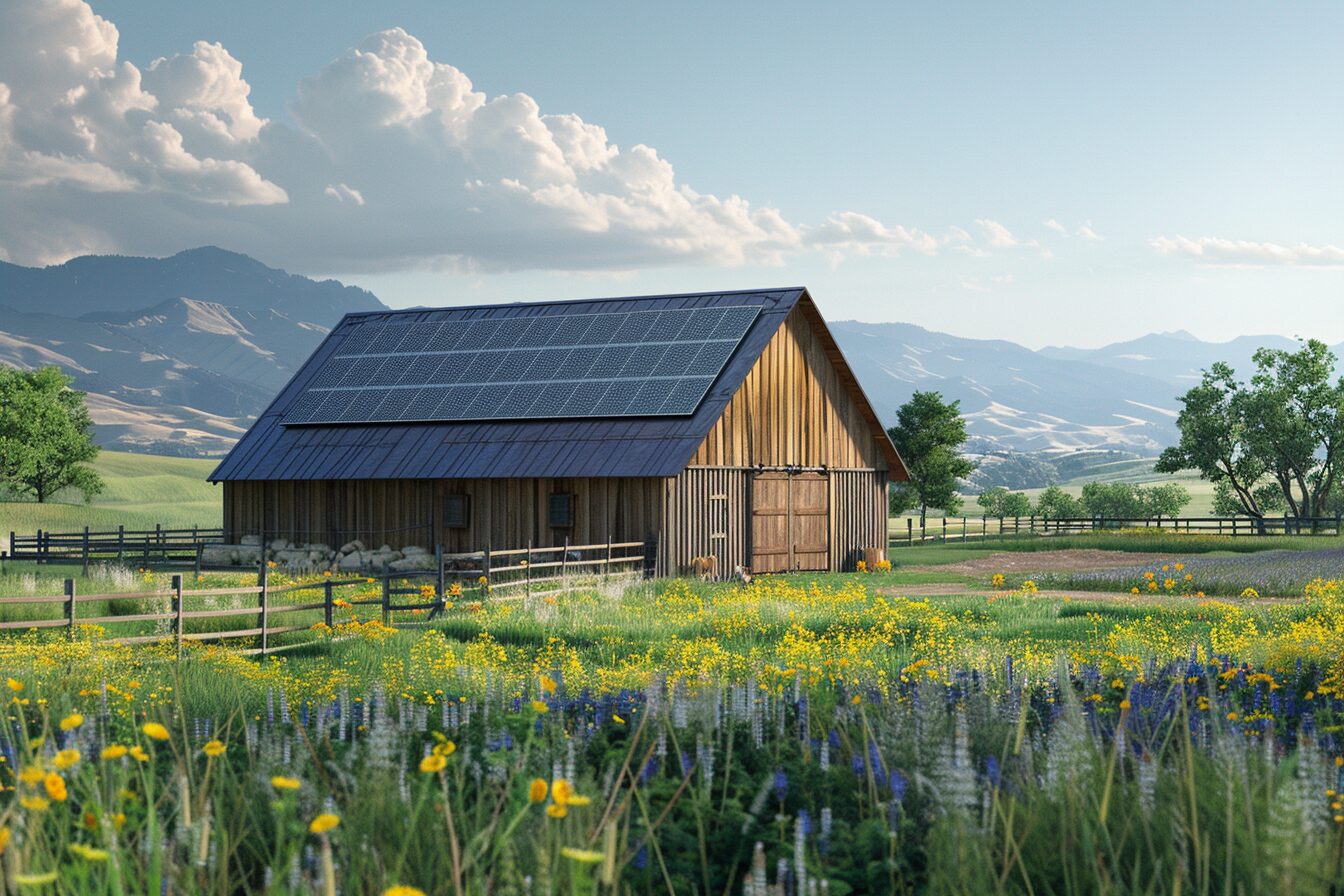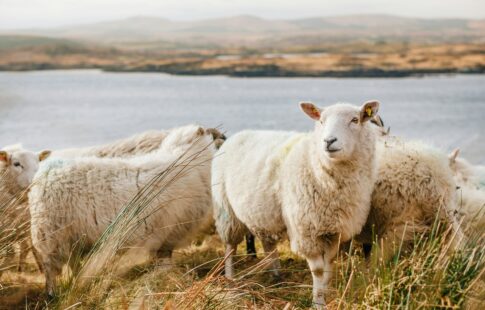
5 Ways Sustainable Farms Are Good for the Planet
We are reader-supported. When you buy through links on our site, we may earn affiliate commission.
Agriculture accounts for a substantial portion of global greenhouse gas emissions. The rise of sustainable farms plays a pivotal role in lowering the amount of carbon released into the atmosphere. Deploying green innovations and eco-conscious practices in food production is great for the planet in several ways.
1. Huge Step Toward Carbon Neutrality
Sustainable farms are big on decarbonization, which is good considering agriculture is responsible for up to 35% of carbon emissions worldwide. They employ renewable energy solutions like solar, biomass and geothermal systems to power daily operations, reducing reliance on fossil fuel sources.
More advanced farms also opt for large-scale electric vehicles to reduce emissions from diesel-powered tractors and trucks. Where EVs are not readily available, eco-conscious farmers utilize drones to handle everything from spot spraying to soil and livestock monitoring. These go a long way in lowering the farm’s carbon footprint and improving efficiency.
Switching to renewables has been financially beneficial, too. A farmer in New Jersey cut her energy bill by 90% after utilizing geothermal energy for her greenhouse. Overall, decarbonization efforts in agriculture represent an integral step toward achieving net zero emissions as outlined in the Paris Agreement.
2. Increased Biodiversity of Local Plant and Animal Life
Large-scale farming causes massive losses in biodiversity around the world. Native plants are hacked away to make room for crops while wildlife endemic to the region are driven from their habitat. Agriculture takes up nearly half of inhabitable land on the planet and will likely occupy more acreage as the global population increases.
Sustainable farms promote the harmonious coexistence of plant and animal life, helping to reduce the rate of natural resource depletion. For example, the integrated rice-fish farming system enables rice cultivation concurrently with marine life, such as fish, crabs and turtles. The paddies provide ample shelter and shade while the animals remove pests and provide natural fertilizer for the plants.
3. Improved Freshwater Conservation
The World Bank estimates a whopping 70% of freshwater withdrawals worldwide are for agricultural purposes. Access to clean, potable water is essential to all life on earth. Diverting over two-thirds of the global supply for food production alone creates a huge imbalance with far-reaching repercussions. Research suggests nearly half of the world’s population will live in areas where freshwater is unavailable or scarce by 2050.
The industry can help address the imbalance and improve water conservation through sustainable farming methods like micro-irrigation systems, rainwater harvesting and water recycling. There are also technologies for treating brackish water or even extracting water directly from the atmosphere, reducing the strain on freshwater resources.
4. Higher Pollination Levels
According to the USDA, more than 150 food crops in the United States depend on pollination. However, rising carbon emissions due to increased burning of fossil fuels and destruction of vital forests create harmful environments for bees, butterflies and other pollinators. Without them, plant life would decline, as would soil and air nutrients.
Eco-friendly farming practices aim to mitigate the impact of climate change on pollination in two primary ways. The first is by eliminating the use of harmful pesticides. Instead, farmers rely on natural methods such as crop rotation and the use of cover crops like Buckwheat and Clover to control pests. The second is by cultivating more plants that attract pollinators alongside regular crops. Examples include sunflowers, marigolds and catmints. These efforts help improve the pollination rate in an area and provide suitable habitats for beneficial insects to thrive.
5. Enhanced Soil Health and Fertility
Soil degradation is a huge problem all over the world. In the last 150 years, aggressive cultivation practices like heavy tillage and deep plowing have weakened soil aggregates, disrupting the natural structure beneath the topsoil. Yet, the demand for food continues to rise, meaning there will likely be more degradation in the coming years.
Sustainable farms often utilize regenerative agriculture methods such as no-till farming and mixed crop rotation to protect soil health and minimize the impact of year-round cultivation. These processes give the soil ample time to replenish, ensuring maximum utilization of resources. Regenerative farming can also produce food that is 34% higher in Vitamin K and 17% higher in Vitamin B2, among other nutrient enhancements.
Examples of Sustainable Farms Around the World
These farms are taking active steps to curtail their environmental impact and promote eco-consciousness in food production.
FRESHFARM
Based in Washington, DC, FRESHFARM promotes sustainability through outreach programs and organic practices. They have a designated market so local farmers can sell directly to consumers, thereby reducing emissions from transporting farm produce. FRESHFARM also raises funds for sustainable farming through its S.E.E.D. Circle program, which boasts a 43% donor retention rate in 2022.
Hands Free Hectare
This UK-based project utilizes automated machines like robots and drones to cultivate crops. It’s a revolutionary system that cuts out increasing reliance on fossil fuel machinery in farming and replaces them with smart, electric-powered devices to improve efficiency.
Duijvestijn Tomaten
In the Netherlands, Duijvestijn Tomaten is facilitating the sustainable production of tomatoes and related crops. The farm has used geothermal heat in its greenhouses since 2011 and has over 2500 solar panels installed since 2019. The result is a CO2-neutral operation that caters to consumers’ nutritional and social well-being.
Highwood Crossing
Sustainably produced whole grains, oats, flours and cold-pressed oils are the specialty of this organization. Located in Alberta, Canada, Highwood Crossing prioritizes organic farming, utilizing methods such as crop rotation and green manure to minimize its carbon footprint. All their products feature the Canada Organic seal, a testament to their commitment to meeting organic agricultural standards.
AeroFarms
AeroFarms takes indoor vertical farming to a new level of precision and productivity to minimize environmental impact. It grows fresh greens — kale, broccoli, arugula, wasabi and more — without pesticides or herbicides. The company also embodies circular design and resource utilization, allowing it to use less land and up to 95% less water than conventional farming.
Cedar Circle Farm
Cedar Circle Farm is certified organic by the Vermont Organic Farmers organization. It employs sustainable practices such as no-till farming, cover cropping field rotation and manual weed removal methods to avoid using herbicides. Cedar Circle Farm also employs innovative methods for pest control. For example, it uses lacewing and mites as a preventative measure against pests in its greenhouses.
Sustainable Farming for a Greener Planet
Agriculture is necessary for life on Earth, but it doesn’t have to come at the expense of the environment. With the rise of sustainable farms, the industry can be on its way to offsetting its gigantic carbon footprint and ensuring a future where eco-consciousness is at the forefront of global food production.
Share on
Like what you read? Join other Environment.co readers!
Get the latest updates on our planet by subscribing to the Environment.co newsletter!
About the author
Rachel Lark
Rachel serves as the Assistant Editor of Environment.co. A true foodie and activist at heart, she loves covering topics ranging from veganism to off grid living.





